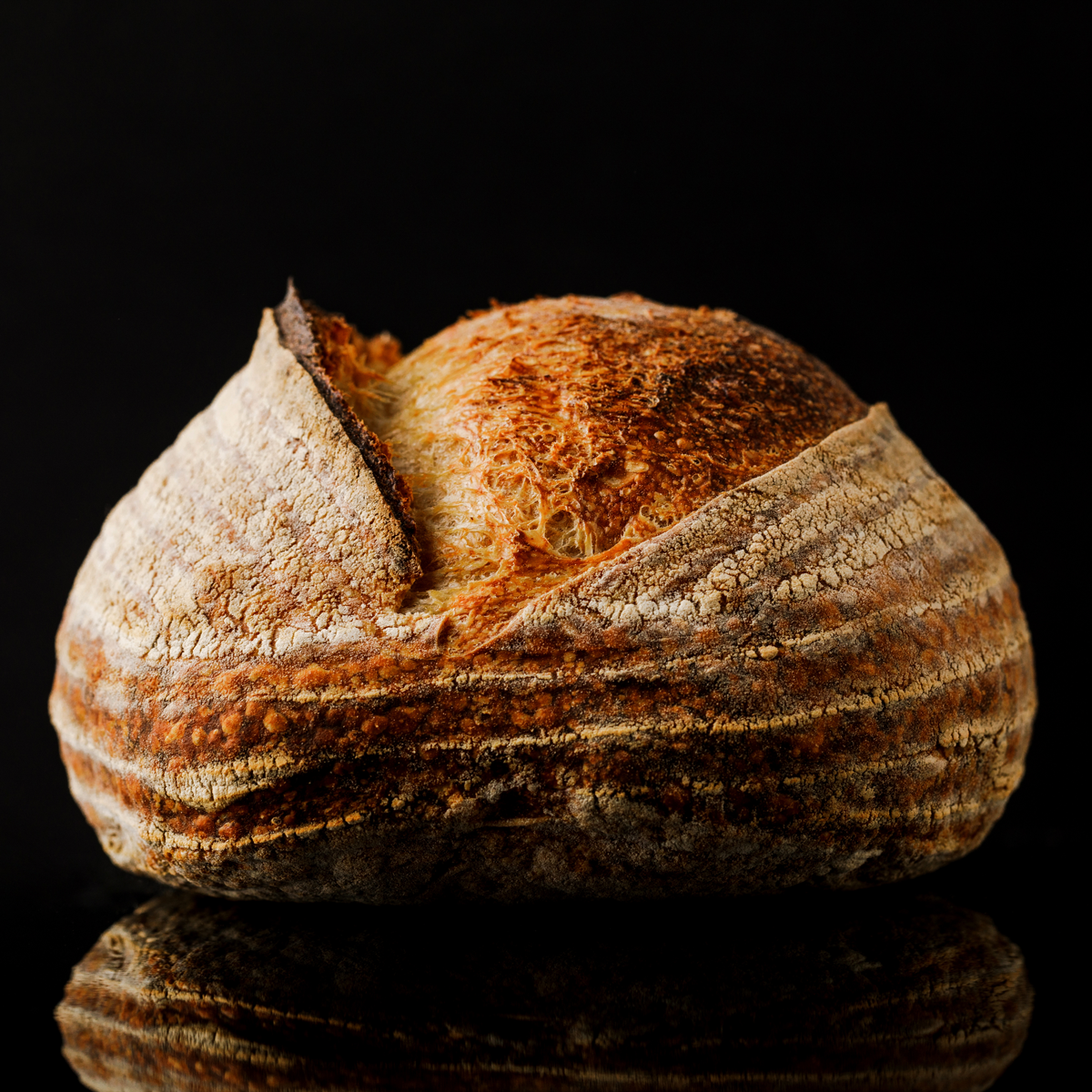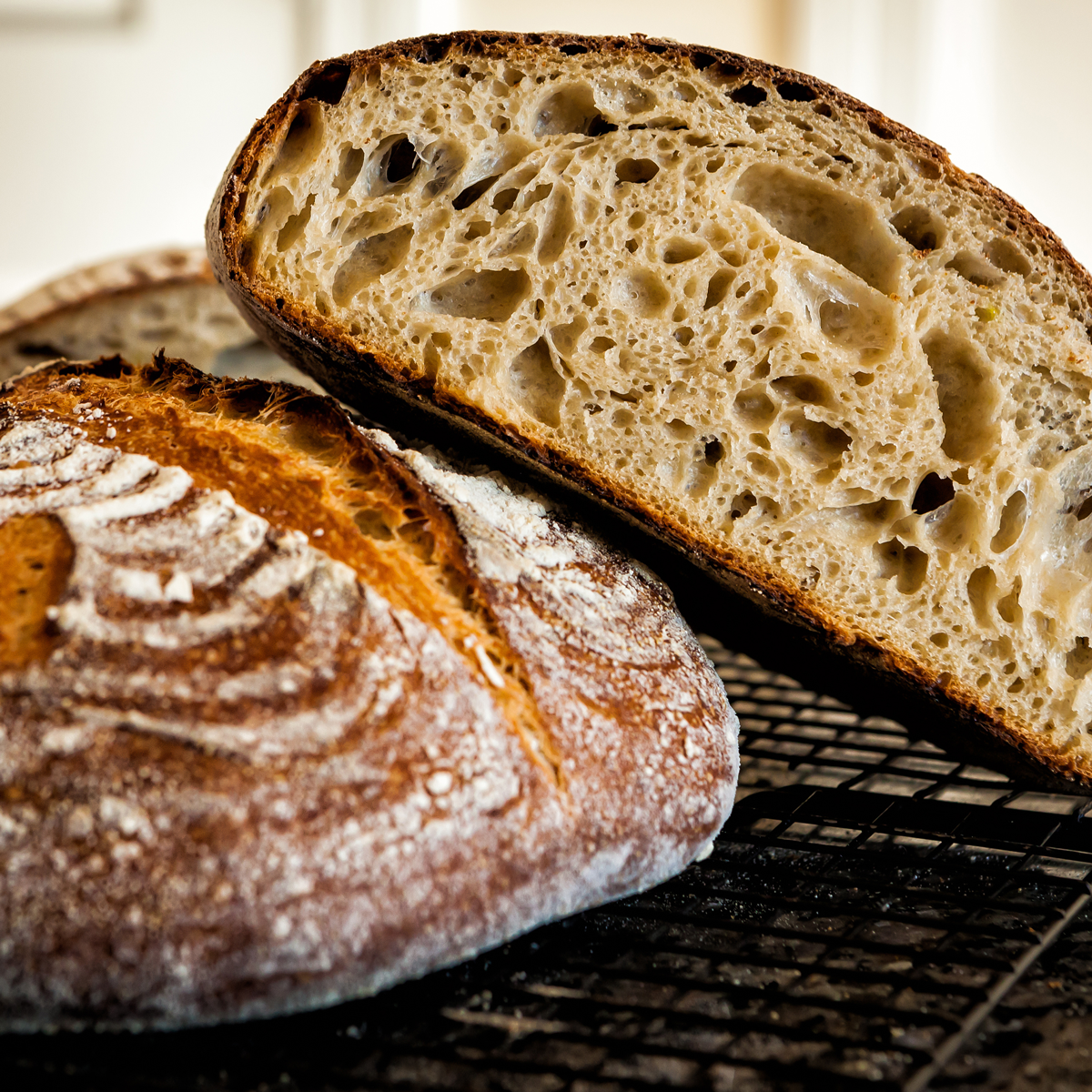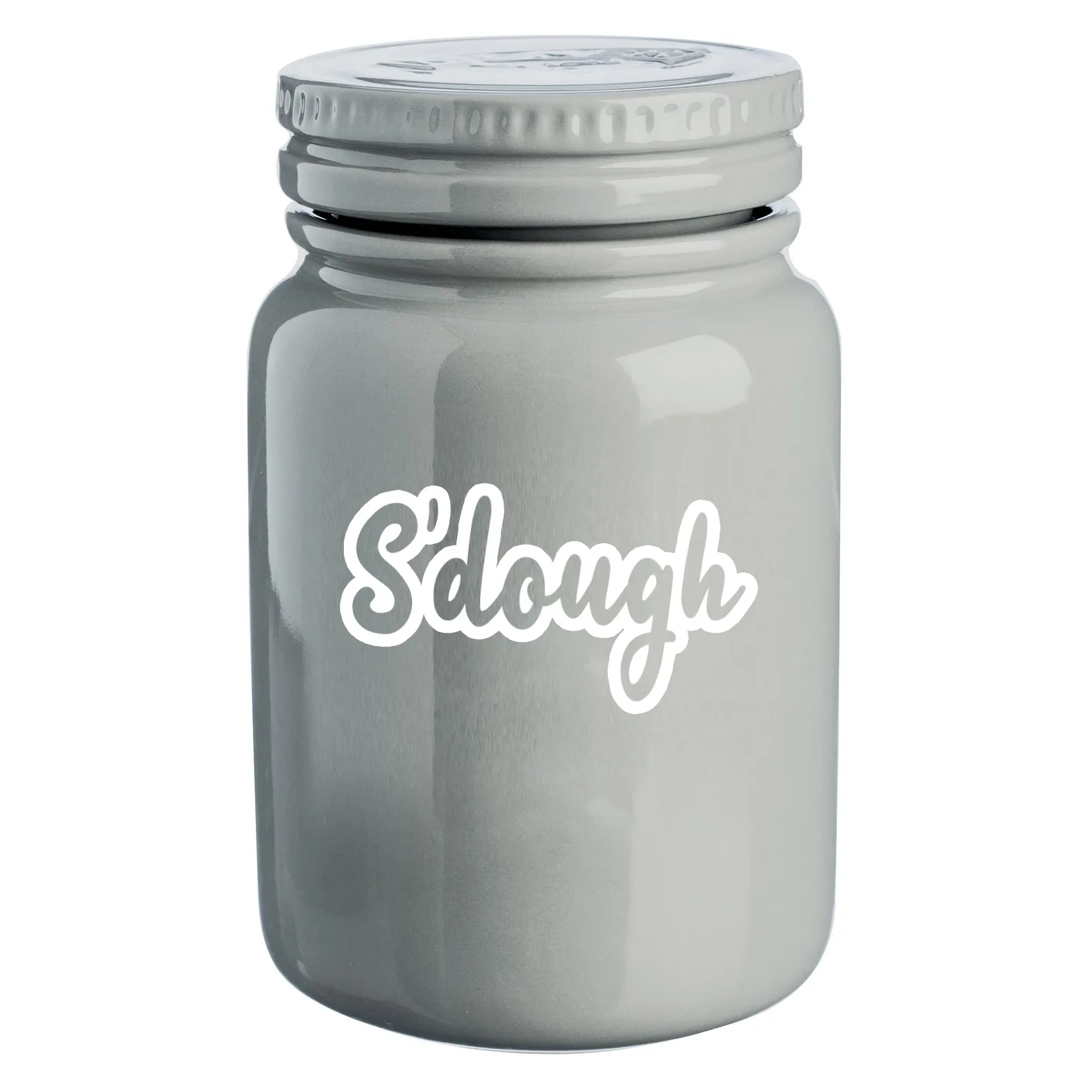Description
How does sourdough work?
Studies suggest that yeast and bacteria collaborate to guard and protect their ecosystems. When mixed with flour, sourdough microbes feed on the nutrients built up within, and enzymes are used to break down and utilise them. Additionally, the enzymes break down flour starch into simple sugars which can then be used by the microbes.
A sourdough colony is made up of one dominant strand of yeast and several lactic acid bacteria (LAB). The LAB is responsible for the acidity found in sourdough dough. The acid (LAB and acetic) produced helps to make sourdough bread fantastically nutritious and digestible. Impressively, this acid also helps to protect the microbe colony from unwanted and harmful bacteria that might destabilise it.
Through aerobic fermentation, the yeast cells produce CO2 from oxygen. This reaction which causes large bubbles in baked sourdough.
The key to baking sourdough is understanding how to control acidity. Factors that all help towards this include: time, temperature, and measurements.







There are no reviews yet.